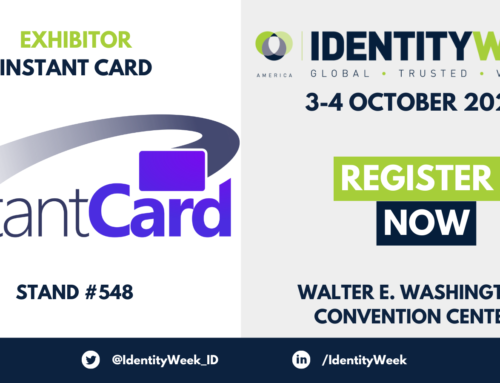Chipped cards, or chip-and-pin, are the new global standard for credit cards. The U.S. was one of the last major economies to make the switch from swipe-and-sign to chip-and-signature.
The old magstripe cards utilized technology dating back to the 1960s. While magstripe cards became popular in the 1980s, hackers always found it easy to skim their magnetic strips and access sensitive cardholder data.
In 2015, this all changed, and chipped cards became the benchmark. Figuring out how do chipped cards work became a priority for merchants as liability for fraudulent transactions was shifted away from card issuers to merchants who didn’t support the new security standards for cards.
Here’s what you need to know about how chip cards work and the card chip technology behind it.
EMV Chip Cards Technology
Europay, MasterCard, and Visa (EMV) chip cards technology arose in the U.S. in 2015, in a long-overdue transition towards European and Canadian standards.
When asking, “How does a chip card work?” you need to look at the front of your card. Chipped cards contain a small silver or gold-colored chip on the left of the card face.
During transactions, a merchant will ask the customer to insert their card into a reader instead of swiping the magnetic strip, like in the old days.
The EMV compliant reader will process the chip to authenticate the transaction. Customers will often be prompted to enter their unique PIN. This is known as a chip-and-pin transaction.
Once the cardholder has authenticated the purchase, the transaction is authenticated online with the issuing bank. In the event there’s a problem with the network, transactions may still be processed offline using Static Data Authentication (SDA) and Dynamic Data Authentication (DDA).
Regardless of whether SDA or DDA is used offline, the payment data is instead authenticated via communication between the card and the terminal itself.
Are Chip Cards Safer?
Yes, chip cards are safer, but how are chip cards safer?
The old chip-and-signature cards have a much lower level of security during in-person transactions because the merchant only has to verify the customer signature on the back of the card.
Various skimming devices were also used to extract the data from old magstripe cards. These could be covertly inserted into ATM terminals or even used by the merchants themselves.
EMV chip card technology means a criminal has to work out what your PIN is to complete the transaction. In other words, you’re much less likely to fall victim to fraud.
Are Chip Cards Fraud-Proof?
When answering the question, “How do chipped cards work?” it’s easy to think that although they are the gold standard for credit cards, they are also 100% effective against fraud.
This couldn’t be further from the truth. There’s no single technology, or even a group of technologies, that protects against all types of fraud every time.
What is clear is that the implementation of chipped cards has drastically reduced card-present fraud. Visa announced that in the three years following U.S. implementation, this type of fraud had decreased by 80%.
How credit card chips work, as well as consumer demand for convenience, means criminals could still steal a card and make either online purchases, where a PIN is usually not required, or make low-value contactless payments.
How to Protect Yourself from Credit Card Fraud
Although the threat of card-present fraud has largely receded, credit card fraud remains a serious problem, with consumers losing billions worldwide every year to this sort of crime.
Criminals are constantly evolving their tactics to steal your data and your money. This is why consumers are strongly advised to not only do their research into the question, “How does a chip card work in practice?” but to also exercise vigilance.
Inspecting your credit card reports and reporting suspicious transactions immediately is a huge part of this vigilance.
Finally, make sure you do everything you can to keep your credit card number hidden. Remember, many credit cards enable you to make purchases online without your PIN, so if someone secures your security code, credit card number, and expiration date, they can make a fraudulent purchase.
Who Accepts Chip Cards?
Encouraging U.S. merchants to learn “How do chip cards work?” was a major priority for the major credit card organizations.
To do this, it shifted the liability for card-present fraudulent transactions to merchants who refused to upgrade to EMV chip card technology.
The overwhelming majority of merchants who accept card payments within the U.S. will now have this technology available. Visa said in 2018 that 68% of U.S. storefronts had already tasked themselves with answering the question, “How do chipped cards work?” As a result, the number is likely to be significantly higher in 2021.
If you live in a major population center, you’ll have little issue finding a merchant who accepts chip-and-pin payments.
Conclusion
Chipped cards have dramatically increased the security of making credit card transactions. As more and more storefronts adopt the technology, criminals are increasingly trying to break through these systems.
InstantCard is a leading provider of secure chipped card solutions. We specialize in helping merchants handle chip-and-pin transactions securely.
For help with design, consultation, implementation, and compliance, contact us today to learn more about chipped cards and to upgrade your business’s payment infrastructure.
We can also help you with any of your ID badge needs, including student and employee IDs.



